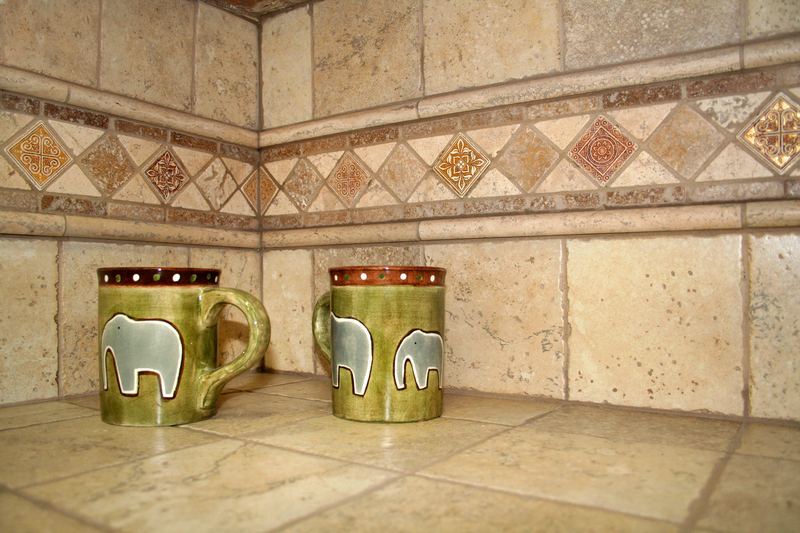Simple Steps to Conquer Damp Odor
Posted on 30/05/2025
Simple Steps to Conquer Damp Odor: Your Complete Guide
Are you tired of that unpleasant damp odor invading your home? Musty smells can make even the most beautiful living spaces uncomfortable and uninviting. Fortunately, you can take simple steps to conquer damp odor and restore freshness to your environment. In this comprehensive guide, we'll walk you through effective strategies and practical tips to eliminate musty odors, prevent their return, and keep your home smelling fresh and clean.
What Causes Damp Odor?
Understanding the source of damp odor is essential for effective removal. These earthy, stale smells are often the result of excess moisture lingering in your home's air or surfaces. Common causes include:
- Poor ventilation in enclosed spaces such as basements, closets, and bathrooms.
- Water leaks from roofs, pipes, or appliances.
- High humidity levels, especially during rainy or muggy weather.
- Mildew and mold growth, thriving in moist environments.
- Wet laundry or carpets not dried properly.
- Condensation on windows or walls.
By identifying these sources, you can apply the right steps to banish damp odor once and for all.

Simple Steps to Conquer Damp Odor in Your Home
The key to a fresh-smelling home is a combination of cleaning, drying, and preventing future issues. Here's a step-by-step approach:
Step 1: Locate the Source of Moisture
- Check typical trouble spots: bathrooms, kitchens, basements, laundry rooms, and under sinks.
- Look for signs of leaks, such as water stains, damp patches, or peeling paint.
- Inspect for mold and mildew--common culprits behind musty smells.
If you find leaks or standing water, fix these issues as soon as possible to prevent damping odors from worsening.
Step 2: Improve Ventilation
- Open windows and doors regularly to let in fresh air. Cross-ventilation is especially effective.
- Use fans or exhaust systems in kitchens and bathrooms.
- If possible, install air bricks or vents in damp-prone areas.
- Make space between furniture and walls to allow airflow.
Good ventilation helps evaporate moisture, making it much harder for mold and mildew to grow and eliminating musty odors at their source.
Step 3: Reduce Indoor Humidity
- Use a dehumidifier in damp rooms to maintain humidity below 60%.
- Fix any leaks in plumbing, appliances, or the roof to prevent further water ingress.
- Hang laundry outside when possible, or use a vented dryer.
- Insulate walls and install vapor barriers in basements and crawlspaces.
Controlling humidity prevents damp odors and creates an environment unfriendly to mold and bacteria.
Step 4: Deep Clean Affected Areas
- Wash walls, tiles, and floors with a solution of water and mild detergent.
- Use vinegar or baking soda to neutralize odors on hard surfaces and fabrics.
- Carpets and upholstery may require steam cleaning or professional services.
- Pay special attention to hidden corners, behind furniture, and inside closets.
A thorough cleaning removes both the smell of damp and the bacteria, mold, or mildew causing it.
Step 5: Remove and Treat Mold and Mildew
- Scrub visible mold with a mixture of water and white vinegar, or use commercial mold removers.
- For porous items (like drywall or insulation), removal and replacement may be necessary.
- Wear gloves and a mask during this process to avoid exposure to mold spores.
- Ensure the area is completely dry after treatment.
Remember, tackling mold early is a critical part of musty odor elimination and keeps your indoor air safer and cleaner.
Step 6: Refresh Soft Furnishings and Textiles
- Launder curtains, cushions, and bedding on a hot cycle if possible.
- Air out mattresses and pillows in the sun--ultraviolet rays can help neutralize odors.
- If textiles can't be machine-washed, sprinkle with baking soda, leave for a few hours, then vacuum off.
Fresh textiles go a long way toward neutralizing persistent damp smells in your living environment.
The Best Products and Natural Remedies to Ban Damp Odor
When you need extra help, try these powerful tools and household staples to remove damp odor for good:
- Activated charcoal: Place bowls in musty spots to absorb moisture and odor naturally.
- Baking soda: Sprinkle on carpets or in shoes to draw out smells.
- White vinegar: Put a bowl in affected rooms or use as a cleaning agent for surfaces.
- Odor-absorbing gels or sprays: Designed to eliminate (not just mask) odors.
- Essential oils: Lemon, tea tree, or eucalyptus oil have natural antibacterial properties and can freshen air.
- Moisture absorbers like silica gel: Useful for closets, wardrobes, and storage boxes.
Combine these remedies with proper cleaning and ventilation for best results.
Preventing Damp Odor from Returning: Long-Term Solutions
True conquest over damp odor means stopping it before it starts. Here's how you can keep your home fresh and dry in the long term:
Regular Maintenance and Checks
- Inspect your roof, attic, and crawlspaces at least twice a year for leaks or signs of moisture.
- Repair damaged caulking or weather stripping around windows and doors promptly.
- Clean dehumidifier filters and drains to ensure efficient operation.
Smart Home Habits
- Always dry out wet items: Hang up towels, mop up spills immediately, and don't leave wet laundry in the machine.
- Open windows after showers or when cooking to vent steam.
- Regularly move furniture to check for trapped moisture or hidden mold.
- Store clothes, papers, and valuables in airtight containers in basements or attics.
Upgrades for Challenging Spaces
- Install a sump pump in damp basements to prevent flooding and excess moisture build-up.
- Add waterproof membranes to basement floors and walls where persistent dampness is present.
- Consider upgrading window glazing or insulation in poorly ventilated rooms.
Implementing these approaches will drastically minimize future occurrences of musty house odors and keep your environment fresh year-round.
Frequently Asked Questions
1. Can air fresheners alone remove damp odor?
No. Air fresheners might mask musty smells temporarily, but they do not address the root causes such as moisture or mold. Addressing the source is essential for lasting results.
2. What if my house still smells musty after cleaning?
If your home still has a damp smell after cleaning, there may be hidden mold or ongoing moisture issues. Use a dehumidifier, inspect hard-to-reach areas, and consider seeking professional help for persistent problems.
3. Is damp odor dangerous?
While musty odors themselves are not typically harmful, they are often a sign of mold growth, which can affect indoor air quality and trigger allergies or respiratory issues. Tackle these odors promptly to safeguard your health.
4. How can I keep my closet free from damp smells?
- Keep clothes clean and dry before storage.
- Place moisture absorbers or silica gel in closets.
- Open closet doors regularly for airflow.
- Consider installing a small battery-operated dehumidifier in large wardrobes.

When to Seek Professional Help
Sometimes, even following all the simple steps to conquer damp odor may not be enough. If you notice:
- Persistent, unexplained musty smells
- Extensive black mold or fuzzy growth on walls and ceilings
- Structural damage such as deterioration of floors, woodwork, or drywall
- Worsening health symptoms like coughing, headaches, or watery eyes
Conclusion: Make Your Home a Fresh, Healthy Sanctuary
Damp odors may be stubborn, but with the right combination of identification, cleaning, drying, and prevention, you can enjoy a fresh, welcoming home every day. Use the step-by-step guide above to eliminate musty odors at their source, and don't hesitate to combine natural methods with proven household solutions for long-lasting results.
For more actionable advice on keeping your home healthy, subscribe to our tips or browse related articles on indoor air quality, mold prevention, and humidity control.
Banish damp odors for good--your nose (and your guests) will thank you!



